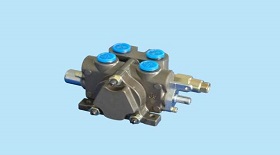The combination of hydraulic valve body in the mainstream of civil field
1. Plate integration of hydraulic valves
Plate integrated hydraulic control device is to fix several standard plate hydraulic control valves on a common floor (oil circuit board, also known as valve plate) with screws. According to the system requirements, through drilling, milling or casting holes in the oil circuit board, the oil circuit connection between the valves can be realized and a circuit can be formed. For more complex systems, it is necessary to decompose the system into several loops, install standard plate hydraulic components with several oil circuit boards, and connect the oil circuit boards through pipelines. Usually, one side of the valve installed on the oil circuit board is called the front side, while the other side without the valve is called the reverse side.
2. Block integration of hydraulic valves
Block integration is a general hexahedral block (manifold block) made of various basic circuits of typical hydraulic system. In general, besides one pipe joint to hydraulic actuator (cylinder or motor), the other three sides are equipped with standard plate hydraulic valves and a few superimposed or cartridge valves, one of which is hydraulic valves. The oil path connection between the blocks is realized by the passage holes inside the blocks. The upper and lower sides of the blocks are overlapping junctions between blocks. There are common pressure oil holes, leak oil holes and bolt holes connecting the blocks. Multiple circuit blocks are overlapped and tightened by four long bolts. The connection of the oil circuit is realized through a common oil hole.
Welcome to the Mechanical parts Exhibition.



